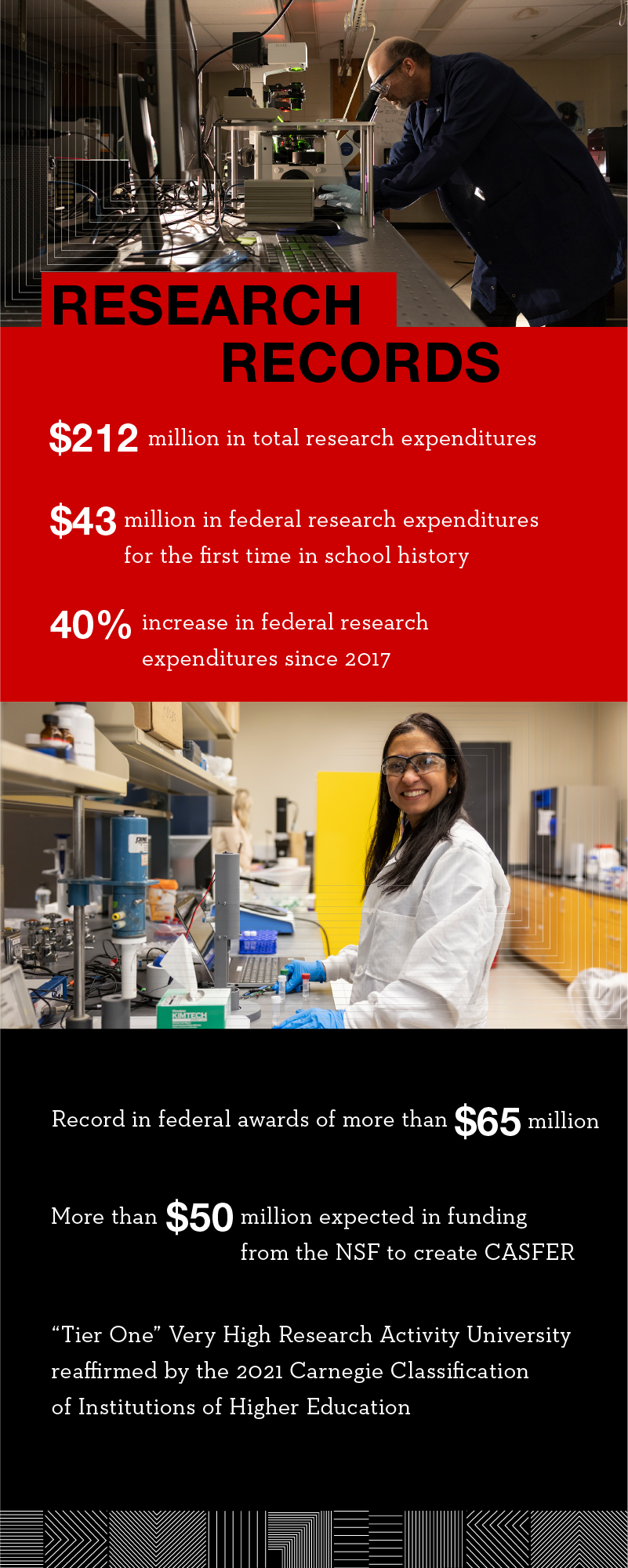Expenditures reinforce Texas Tech’s position as a top institution.

Going into the 2022-23 fiscal year, Texas Tech University has achieved one of its long-term goals – exceeding $43 million in federal research expenditures – and is expected to reach around $212 million in total research expenditures.
Joseph Heppert, vice president for research and innovation at Texas Tech, says the $43 million in federal research expenditures is a critical criterion that speaks to the growth of the university’s research enterprise.
Meeting the goal puts Texas Tech in the same company as some of the top 50 institutions in the nation. It can even determine whether a university is included in the Top American Research University report by the Center for Measuring University Performance.
“Achieving this goal is a fabulous accomplishment for Texas Tech University,” Heppert says. “That accomplishment is really due to the hard work and passion of Texas Tech faculty who require external funding to support their research. These individuals work very, very hard to be successful in competing for that funding at the federal level.”
In August, Texas Tech also announced its largest grant ever. The National Science Foundation (NSF) gave the university $26 million to create the NSF Engineering Research Center for Advancing Sustainable and Distributed Fertilizer Production, or CASFER. CASFER will be headquartered at Texas Tech, and while the grant is initially for $26 million over five years, it could be renewed for five more years and $25 million in additional funding.
“The Engineering Research Center award is the most prestigious and difficult award to obtain from the National Science Foundation,” CASFER Director Gerri Botte explained during the announcement in August.
The university has seen close to a 40% increase in federal research expenditures since Heppert’s arrival at Texas Tech in 2017.
Texas Tech also will achieve around $212 million in total research expenditures when the final tally is in, Heppert notes. That number is up from $191.5 million in total research expenditures a year ago and will be a university record.
“We’re very close to it. That puts us in a very elite category with respect to some of our peers in the Big 12,” he says. “This speaks to the support that faculty bring in, and that our donors and our corporate sponsors bring into research, because all of that rolls up into our total research expenditures. But it also speaks to the support that the state and the university provide for the research enterprise.”

The university’s task in the future is to continue to build on that base of support, he adds.
The amount of research funding is important because it’s one factor that determines access to state research money.
“We’re in competition with some of the other emerging research universities within the state,” Heppert explains.
Texas Tech’s Office of Research & Innovation is developing strategies for assisting faculty members in the early stages of their careers who are learning to write competitive proposals or are transitioning to writing larger proposals. But Heppert also points out that not every faculty member at Texas Tech is striving for funding in the areas of science, technology, engineering or mathematics.
“Naturally, we want those individuals to be successful as well, and so we continue to try to invest in the scholarship of those individuals,” he says.
As COVID-19 becomes more systemic and travel opportunities continue to open up, Heppert says the Office of Research & Innovation will work to support faculty who need to travel to do research or attend conferences.
“We’ll continue to support those who feel comfortable and those who are traveling specifically to engage and present their scholarship in national and international settings,” he says.